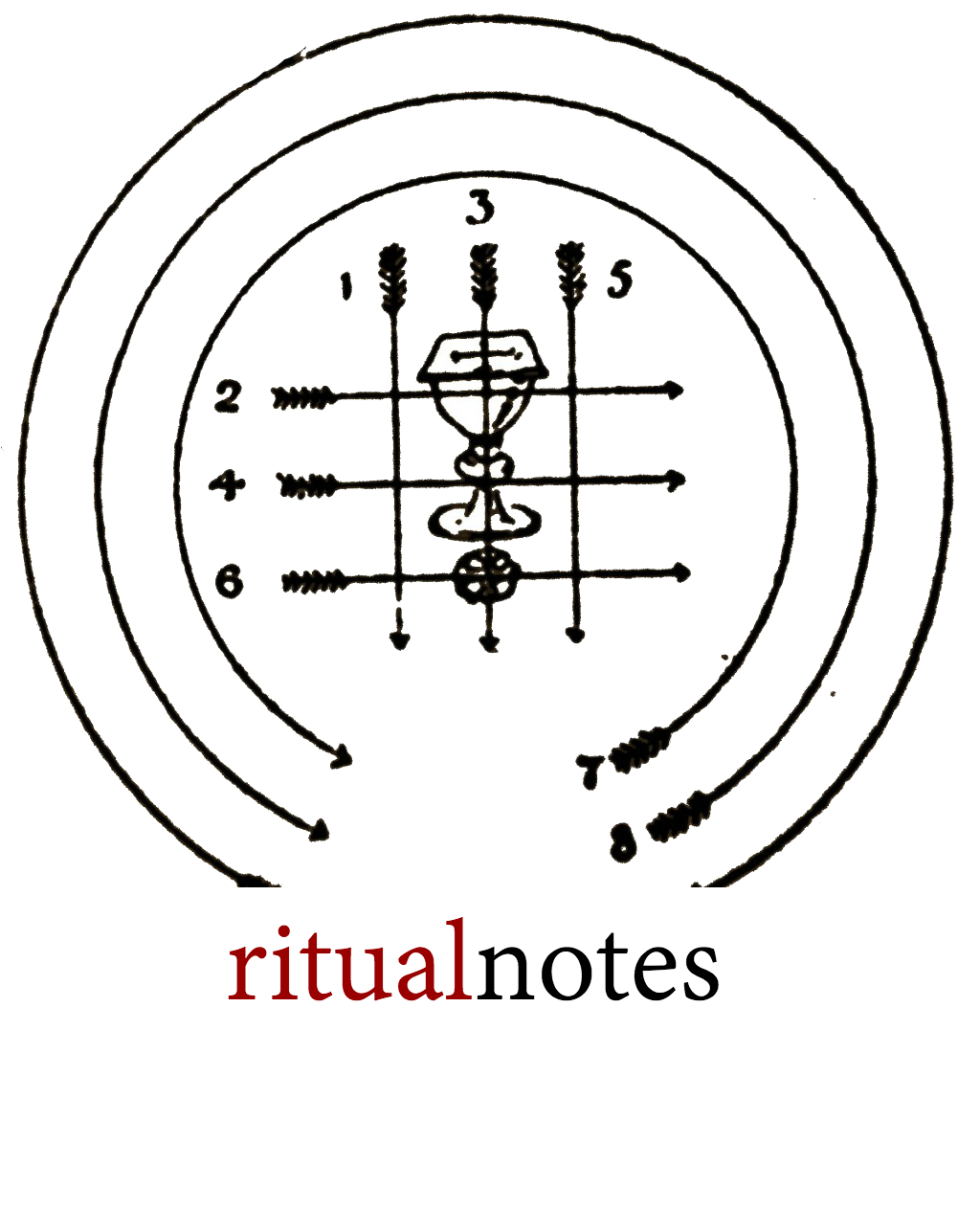One of the curious features of the High Mass is the form of censing of the oblata - the offerings of bread and wine that will become the Body and Blood of Our Lord. The priest makes three signs of the cross over the bread and wine and then three circles, two counter-clockwise and one clockwise. Artistic renderings of this act are everywhere and, indeed, serves as the logo of this website.
Atchley in A History of the Use of Incense in Divine Worship shows that the oblata were incensed as early as the 9th century and it was common by the 11th century. The traditional manner of three crosses and circles was prescribed at Cluny.
What I have always wondered was why the three crosses and the three circles. Clearly there is Trinitarian symbolism, but more specifically, why two circles one way and a third the other? In 1905, Passionist Father Arthur Devine wrote the following:
As by the oblations is signified Christ offering Him self willingly to undergo His Passion and Death, so by the incensation of the oblations is signified that voluntary oblation of Christ so sweet and pleasing to His Heavenly Father. The fragrance of the incense, which is emitted from the thurible, designates how pleasant and acceptable was the oblation of Christ to His Eternal Father. In this mystical sense are the words Incensum istud a Te benedictum ascendat ad Te, Domine to be explained and applied. For Christ offered to His Father is the mystical incense of the sweetest odour to God odore suavitatis (with the odour of sweetness). Also the bread and wine offered in the Mass, and after wards changed into the Body and Blood of Christ, will be that same mystical incense of the sweetest odour to God the Father. To this mystical signification the ceremonies of the incensation seemed to be directed. For, in the first place, when the priest incenses the oblations he makes three crosses over them with the fuming thurible, by which is signified that Christ offered, on the Cross, to His Father three things most pleasing and acceptable namely, the Person of Jesus Christ, His holy Soul, and most pure Body. Then with the thurible the celebrant makes three circular swings around the oblations, and this he does in honour of the Holy Trinity, Father, Son, and Holy Ghost, and to signify that this pleasing and acceptable sacrifice can only be offered to the Holy Trinity or to God alone. By the circular swings is signified the eternity of the Divine Persons. Two of these are made in the same direction and one in the adverse direction, which is interpreted as signifying the Eternal Father as proceeding from no other, the Eternal Son as proceeding from the Father by generation, and the Holy Ghost as proceeding from the Father and the Son, not by generation, or formal likeness by virtue of His procession, but by eternal spiration and love. The aforesaid circles are made around the oblations to signify that the Father and the Holy Ghost are present with the Son in the Sacrament of the Holy Eucharist by circumincession, or the inseparable in dwelling of the Persons of the Trinity in each other.
So - the first swing is for God the Father, who proceeds from no one. The second swing is for God the Son, who proceeds by generation (not creation). The third is the Holy Ghost who proceeds not in generation as in the Son, but by spiration as the love between the Father and the Son.




